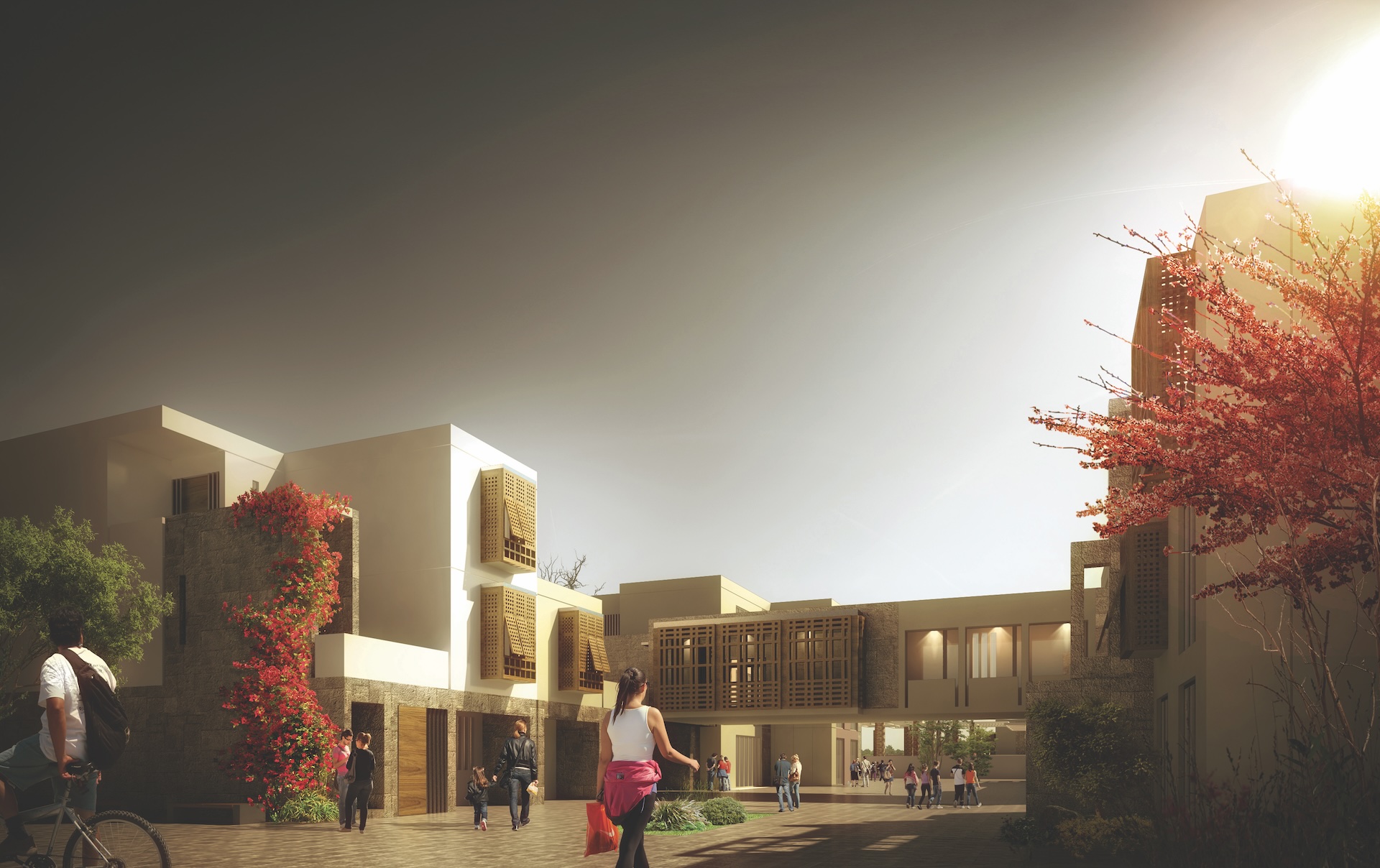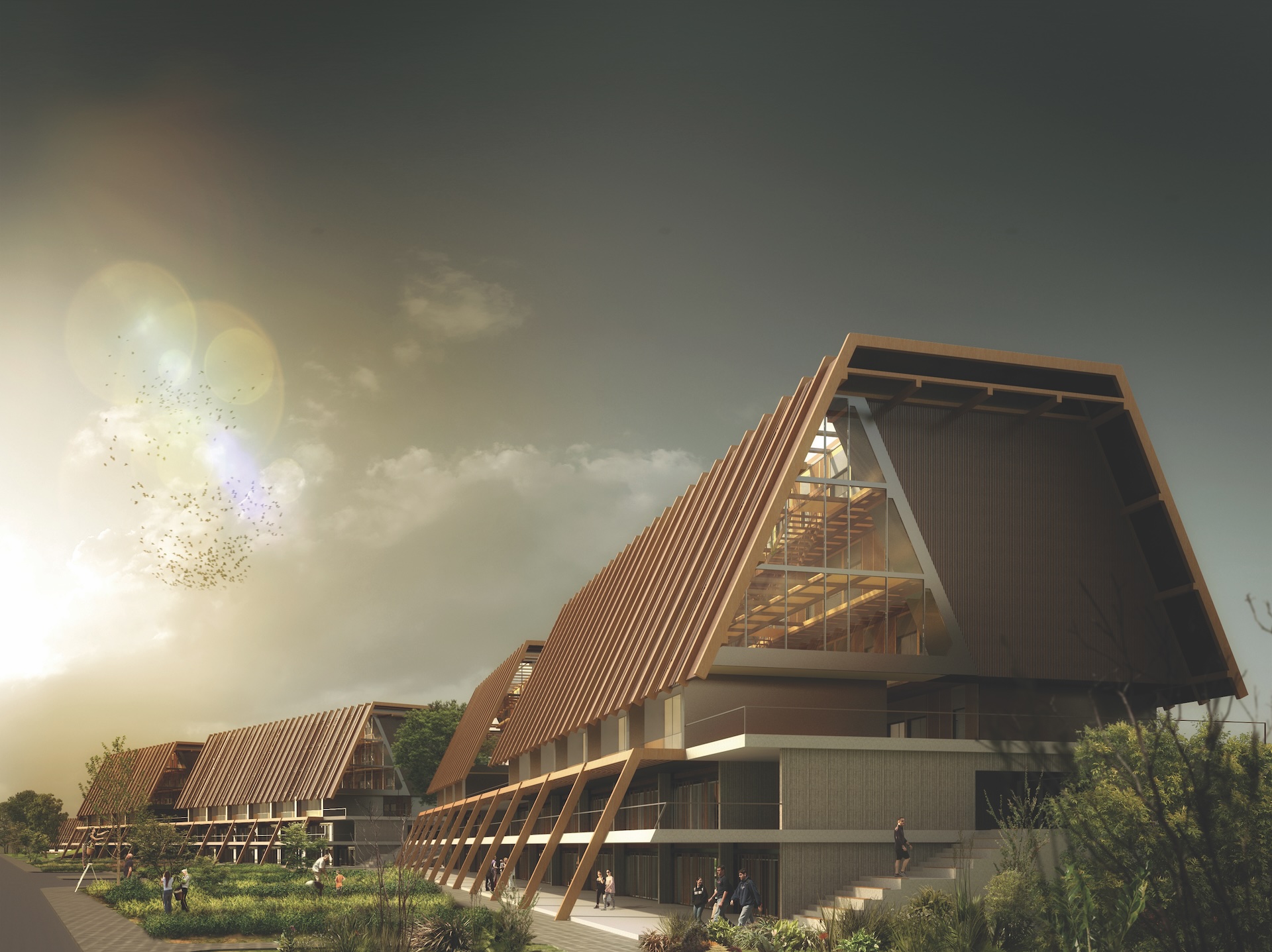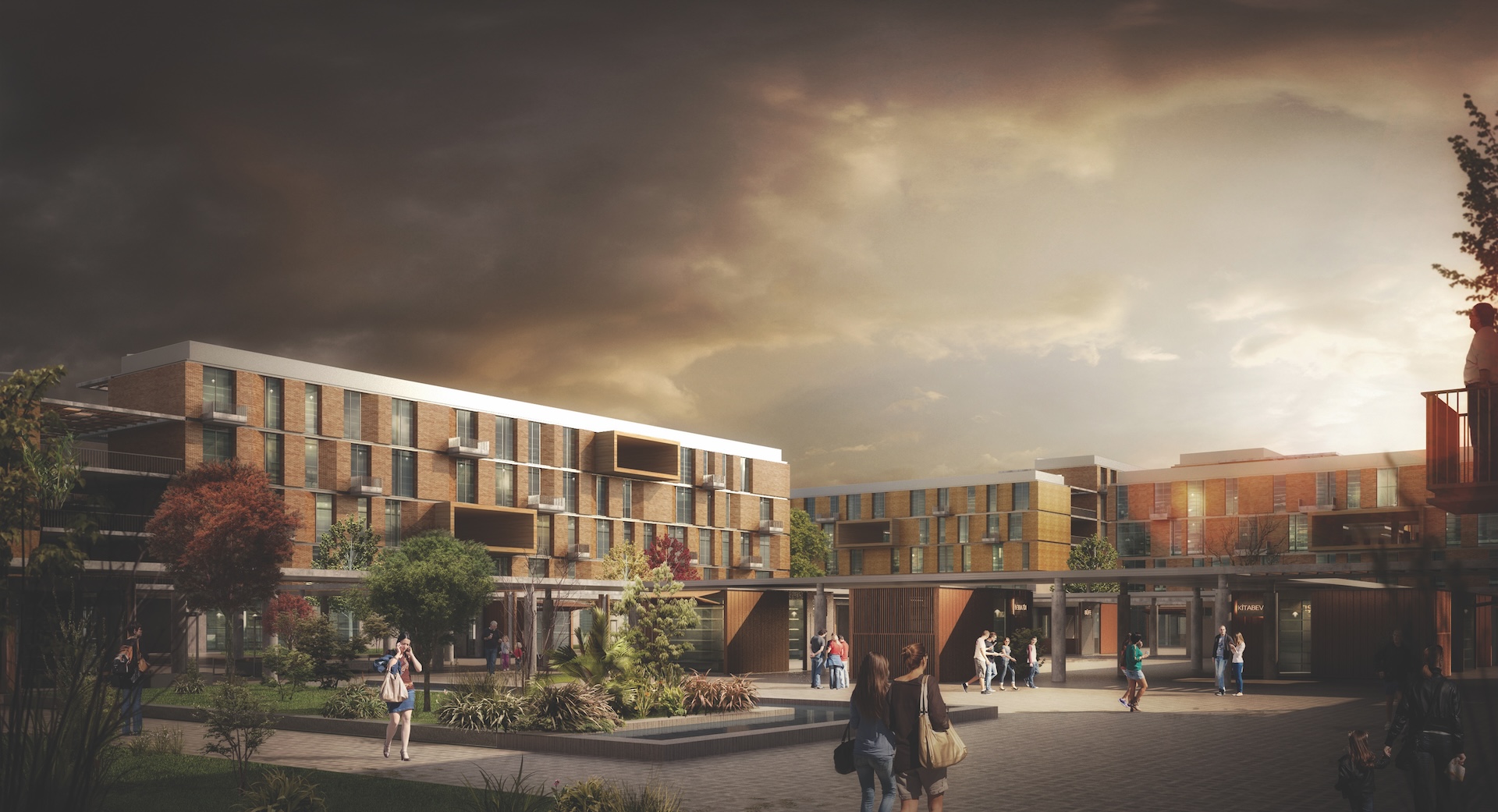
Mus Kepenek Social Housing Project
Mus Social Housing
Located in the Eastern Anatolia Region, Muş is bordered by the districts of Patnos and Tutak in Ağrı to the east; Ahlat and Adilcevaz in Bitlis; Karayazı, Hınıs, Tekman, and Karaçoban in Erzurum to the north; Karlıova and Solhan in Bingöl to the west; and Kulp, Sason, and Güroymak and Mutki in Bitlis to the south.
Muş experiences a harsh continental climate, with temperatures ranging between -29°C and +37°C. For 120 days of the year, temperatures exceed +30°C, while another 120 days see temperatures below 0°C. Snowfall is significant during winter, and annual precipitation varies between 1000 mm and 350 mm. Winters are long and cold, while summers are short, hot, and dry.
Mus Kepenek Social Housing Project
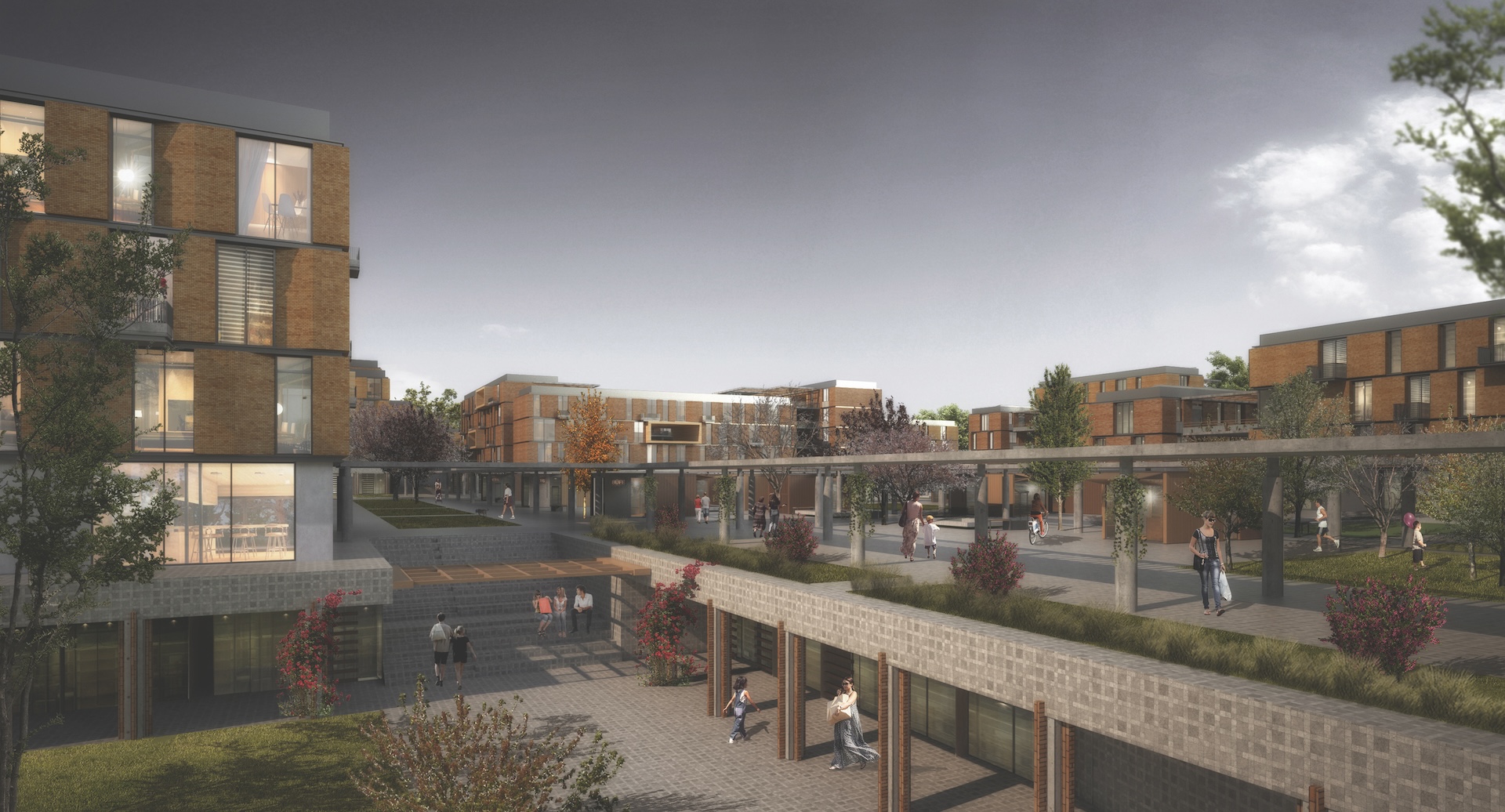
Traditional Muş House Plan Configuration
Traditional Turkish architecture varies significantly across regions, influenced by local climate, living conditions, income sources, culture, and lifestyle. The formation of residential architecture in Muş, much like other regions, is directly shaped by the customs and needs of the people. The climate and geographical constraints further shape these designs.
Old Muş houses share general planning characteristics with houses in nearby cities in Eastern and Southeastern Anatolia but differ in terms of spatial naming conventions. A “Havuş” (courtyard) is entered through a passageway from the street and contains essential elements such as the tandoor, food storage, and shaded areas under trees serving as resting spaces.
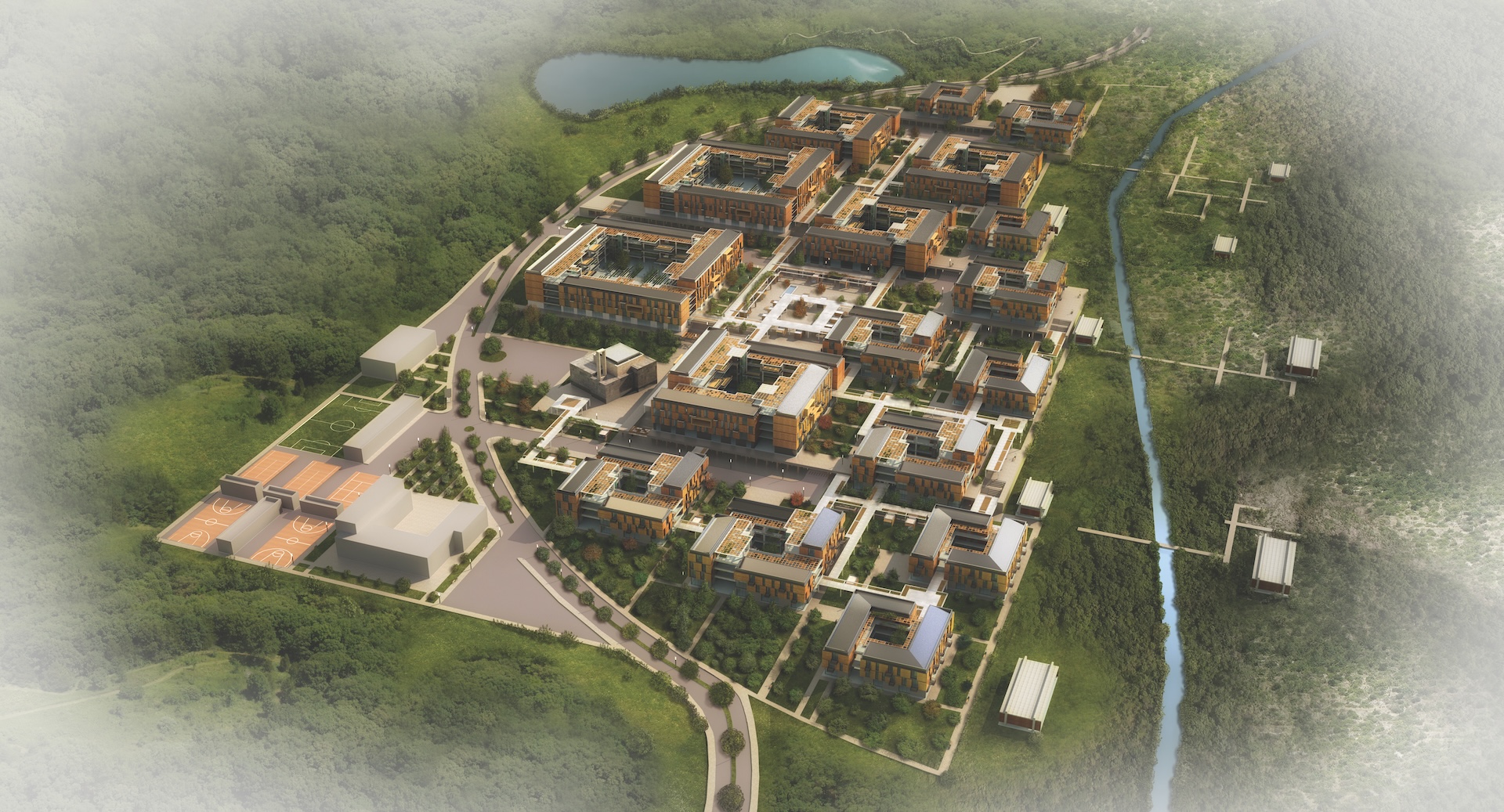

Design Decision
In designing the area, the focus was on the region’s climatic conditions, leading to the proposal of a compact project. The existing recreational river promenade has been integrated with the proposed road axis, shaping the project's contours. Topographical variations allowed for the creation of a base structure, which keeps the area free from vehicular traffic, except for access to underground parking.
The central square has been designed as an open space. Light structural shading elements have been placed in this open area, with kiosks serving the square and surrounding areas. These structures are not directly tied to the building or the open space, but they significantly contribute to the use of shaded areas. These shading elements connect the blocks through semi-open structures, diversifying access routes to the square. They extend to the blocks' courtyards, enabling uninterrupted daily activities. As a result, the commercial spaces and facilities located on the ground level can remain active throughout the day.
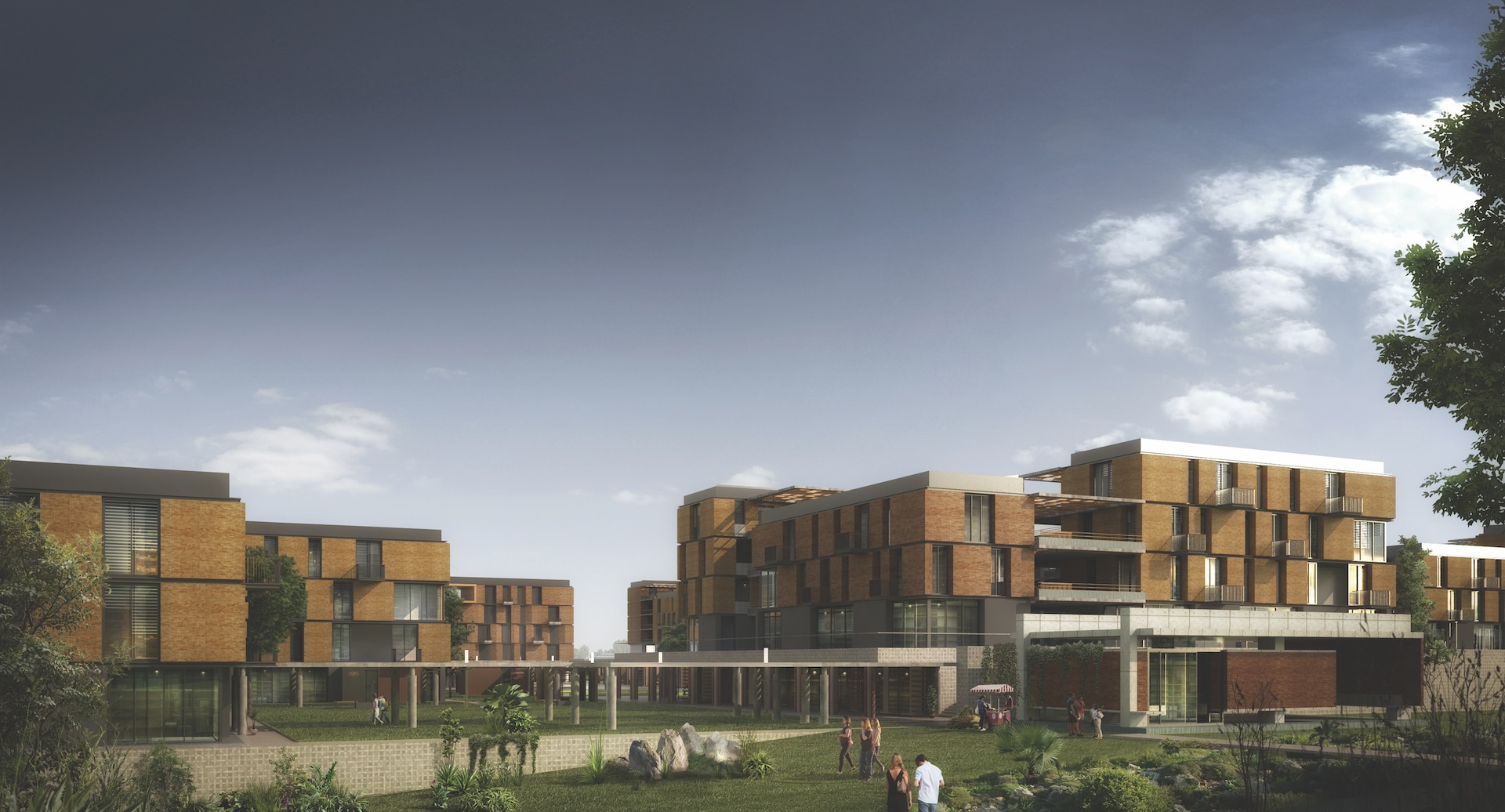
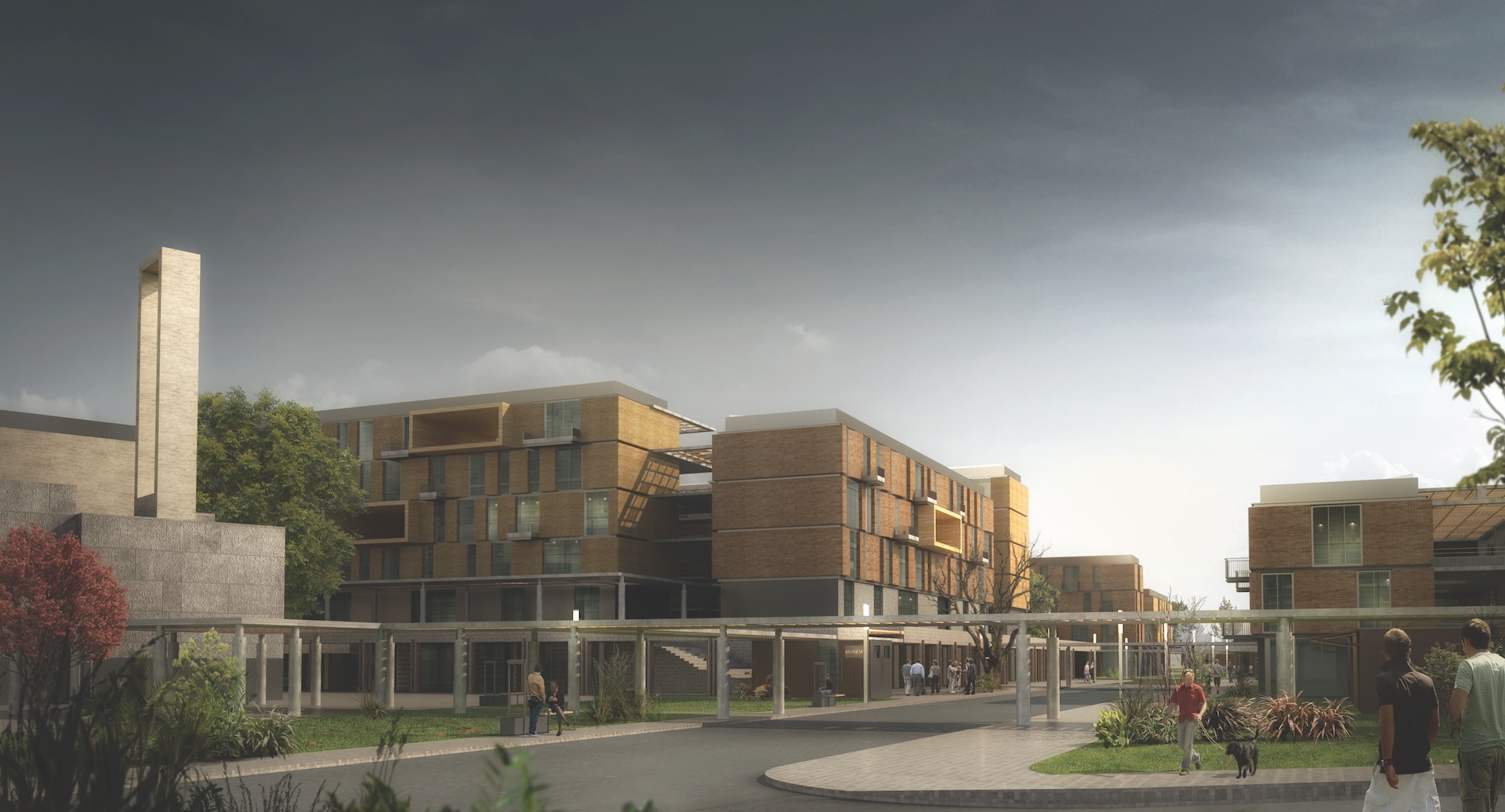
The central square (knot point) is within walking distance of religious, cultural, educational, and sports facilities. Kiosks located along the recreational river promenade connect the two regions, and proposed bridges further enhance accessibility.
The most significant typology in the region’s housing structure is the Courtyard Block (Havuş), which has been proposed. Residential blocks positioned at varying elevations integrate harmoniously with the landscape. The courtyard blocks are organized in a way that entrances and exits align with the entrances of other block types. The spaces between the blocks are designated as green spaces and recreational areas. Facades are clad in bricks typical of Eastern Anatolia.
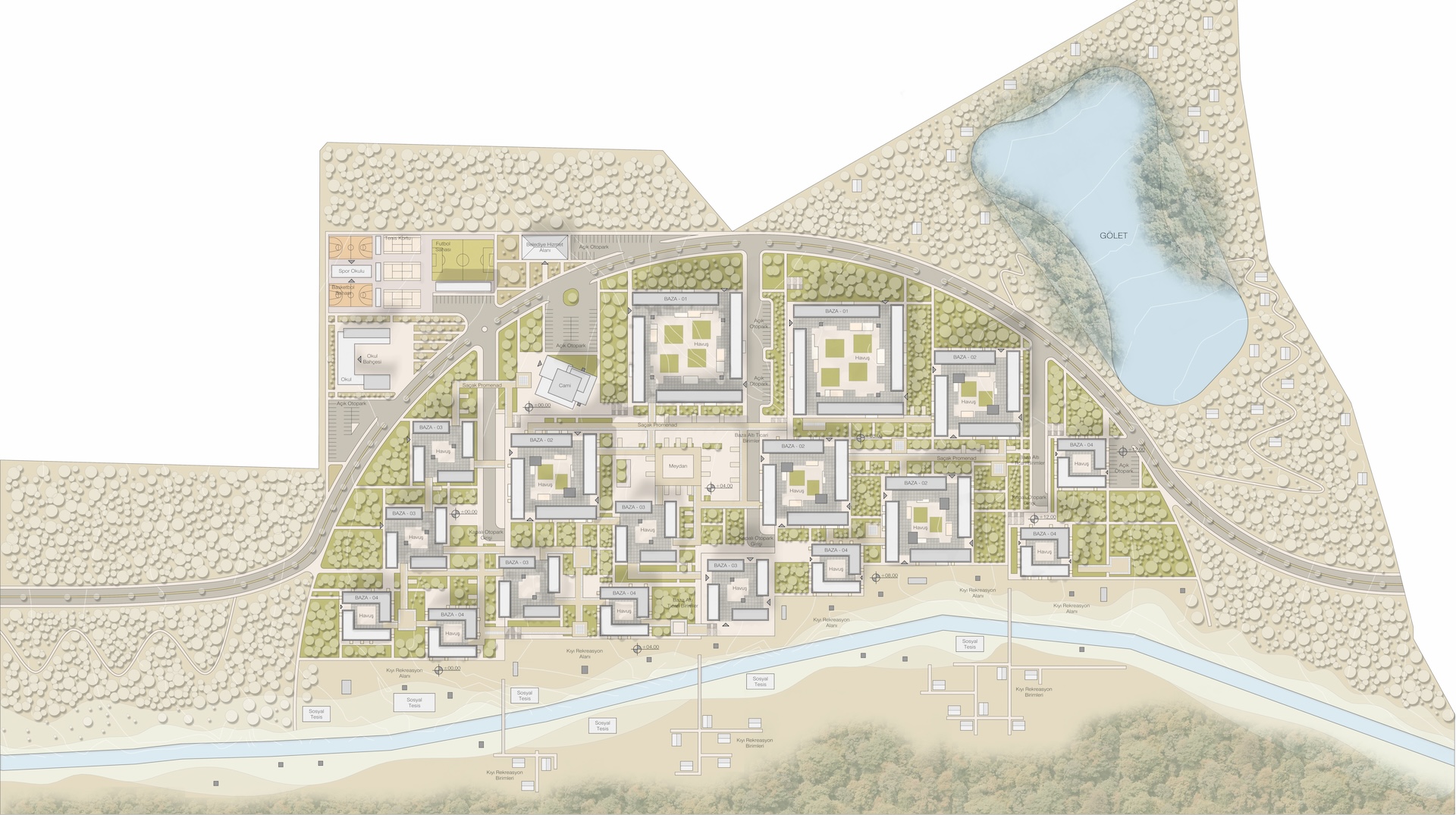
Context
Given the harsh summer climate, the design includes shaded pathways and courtyards to ensure comfortable movement. The entrances to the courtyards are enhanced with features such as garden spaces, cantilevered elements, and gallery openings in front of kitchen windows to maximize daylight penetration, creating vibrant and livable spaces.
Courtyards are designed to remain green and act as resting areas for residents. A key issue in modern urban planning and the transformation of historical settlements is the lack of communal spaces for interaction. Therefore, the courtyard organization has been designed to strengthen communication between residents and revitalize the sense of community.
In regional architecture, the courtyard is considered an interior space, providing opportunities for eating, seating, gathering, and socializing. It also plays an essential role in landscaping, with trees, fruit, flowers, and fountains being important components. The interior courtyards of the structures contribute significantly to the quality of life for both residents and the surrounding environment.
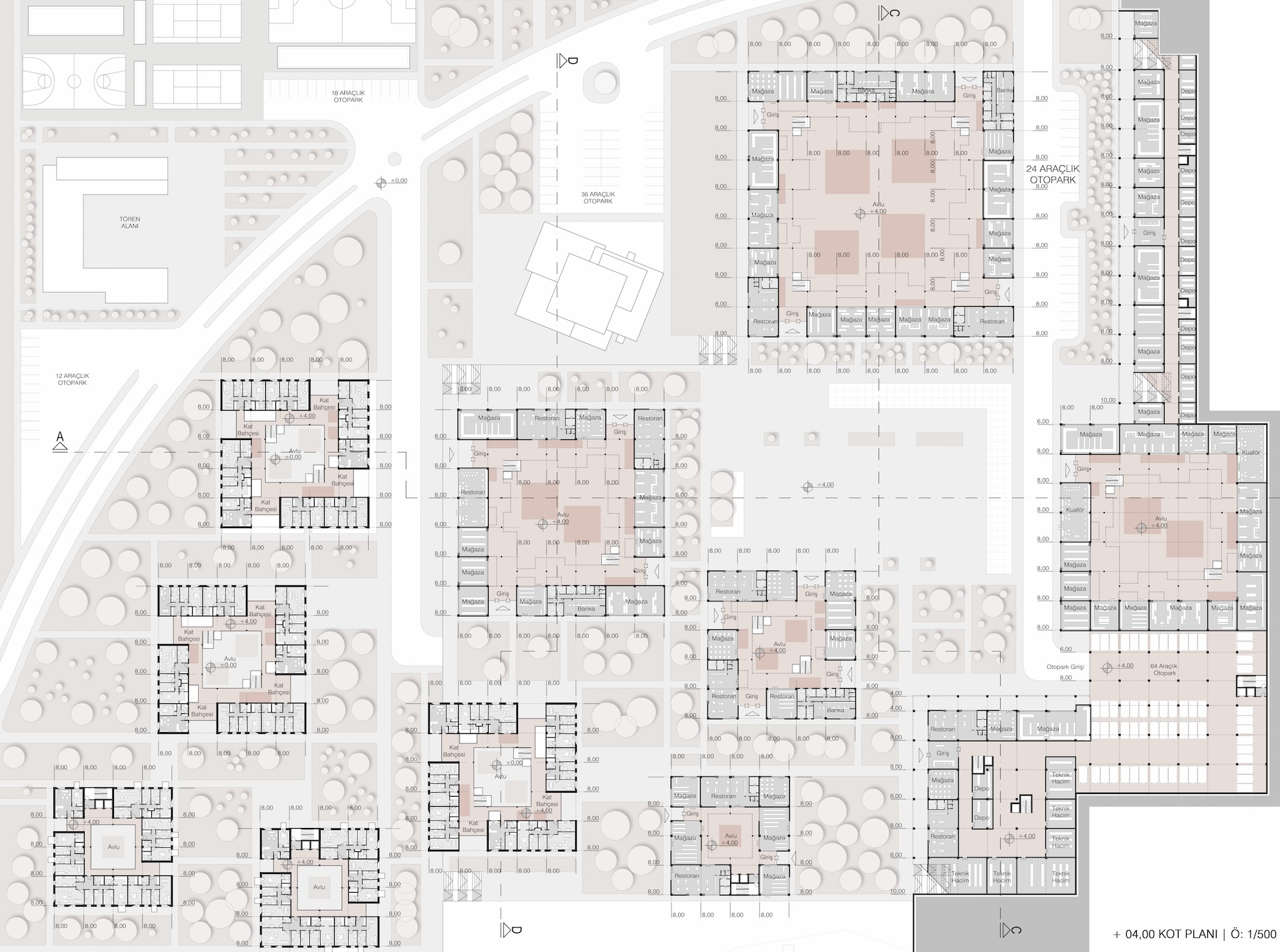
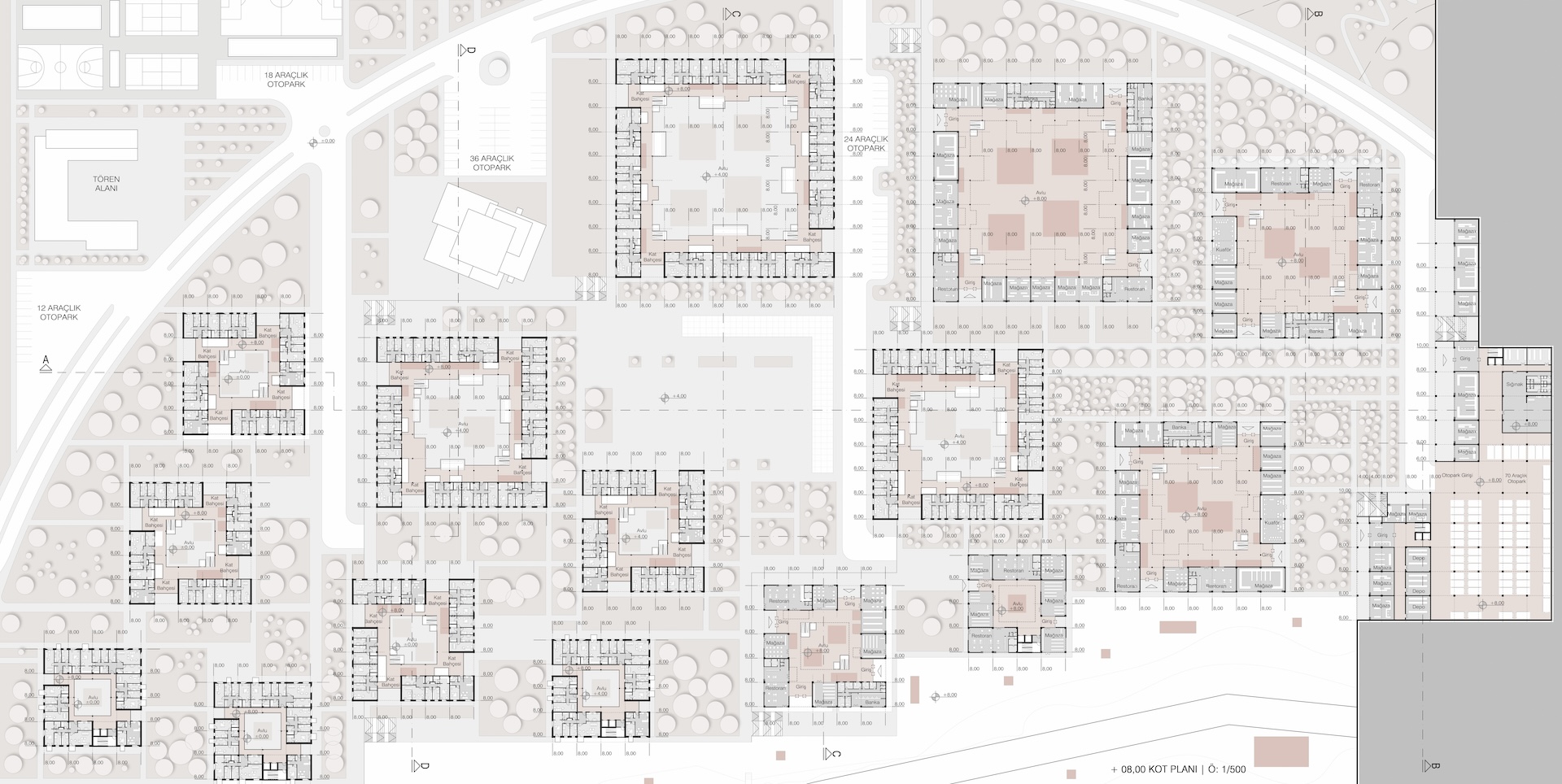
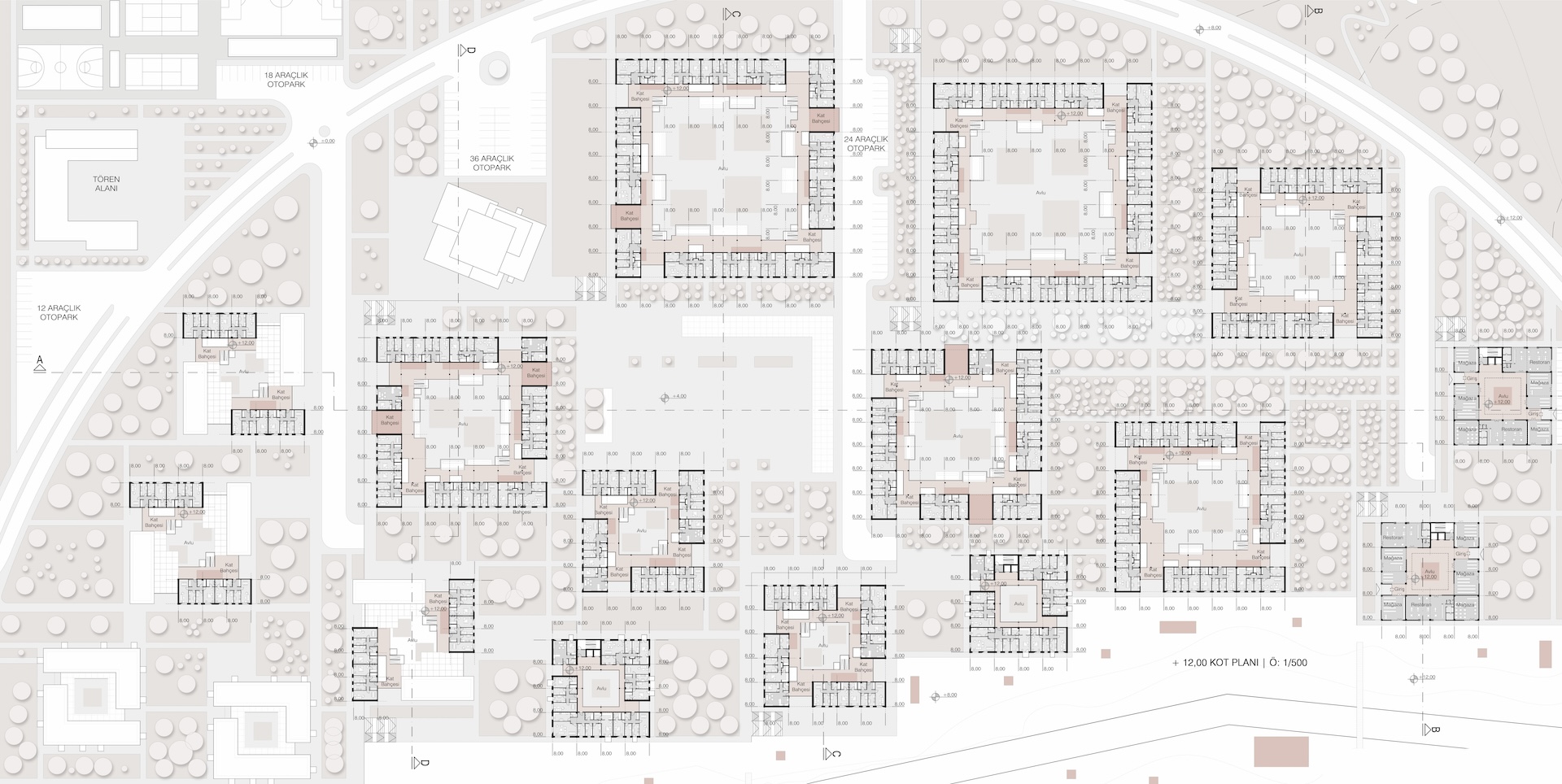
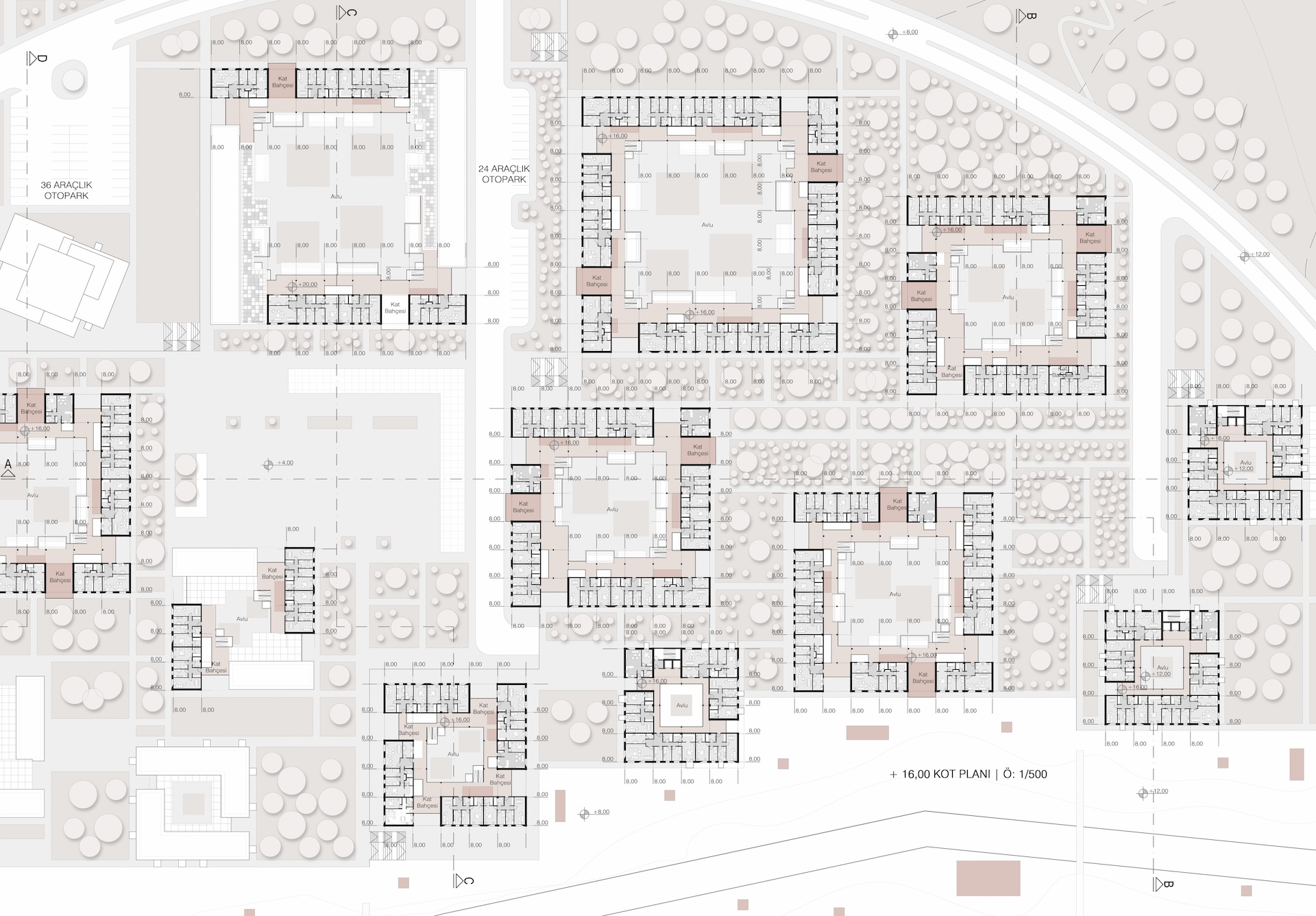
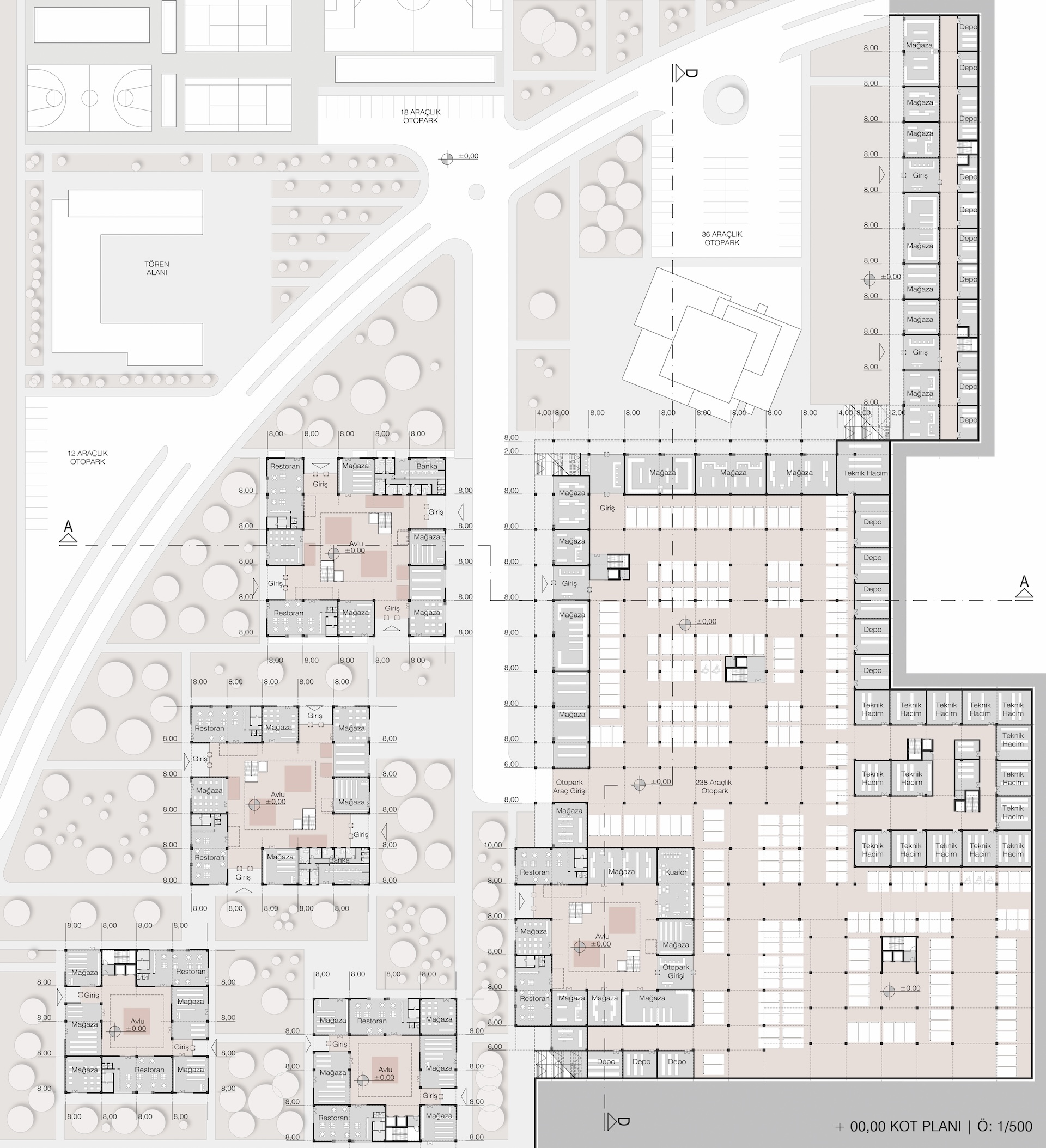
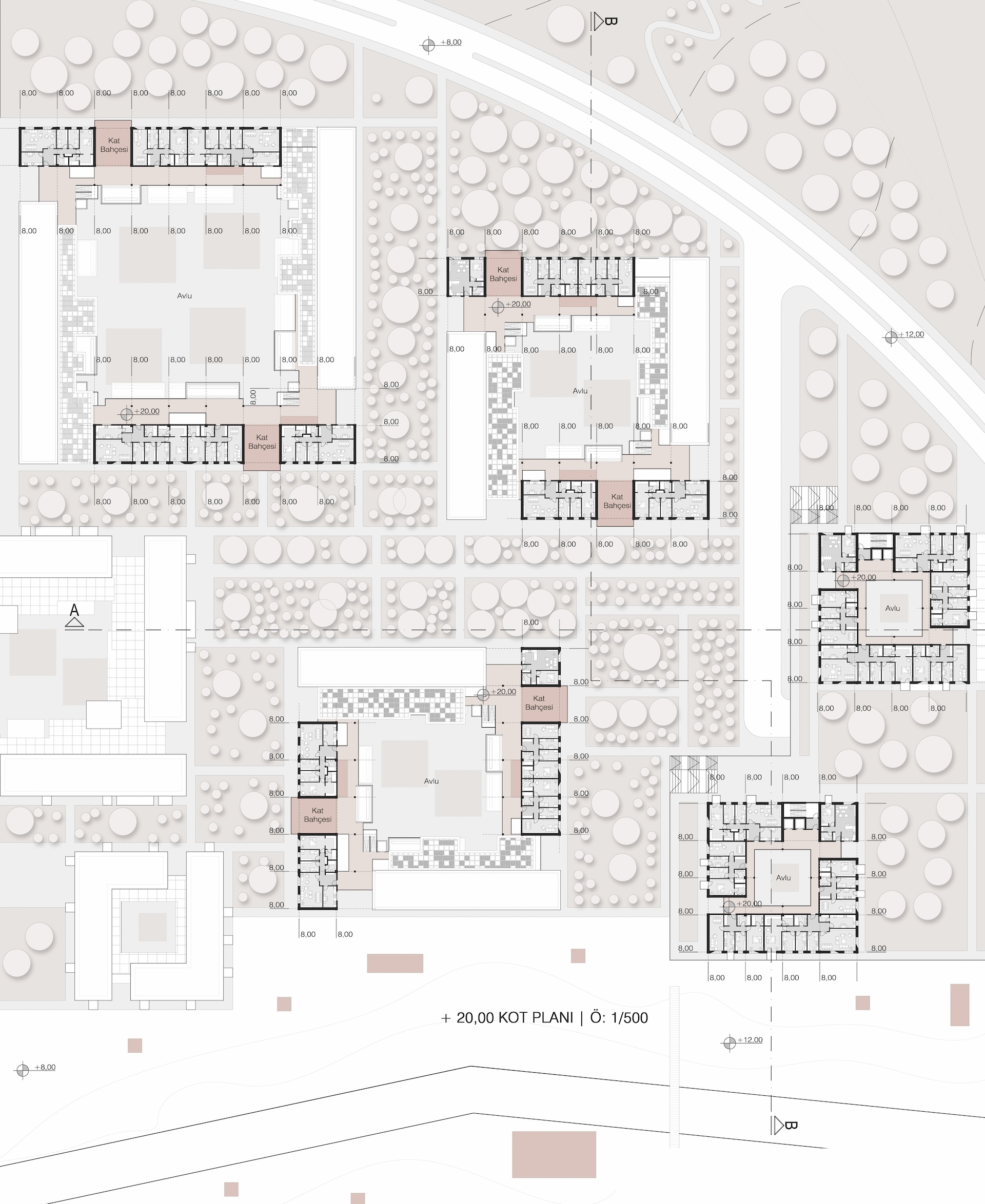
Building Concept
The buildings are designed with a well-defined mass geometry and brick facades, integrating locally sourced materials while also incorporating an interior courtyard arrangement to foster socialization and strengthen neighborhood bonds.
The building blocks are organized in 32 m x 32 m, 40 m x 40 m, 56 m x 56 m, and 72 m x 72 m layouts, each with an interior courtyard. The housing typologies cater to different lifestyles, ranging from 1+1 to 4+1 apartments, with areas ranging from 72 m² to 173 m².
The topography has allowed for the inclusion of underground levels, where commercial spaces (shops), restaurants, offices, and parking are situated. These spaces vary in size, from 72 m² to 140 m². The underground areas are accessed via arcades, ensuring comfortable movement during the hot summer months. The commercial structures below ground level are open for day and night use, contributing to constant circulation and vibrancy within the neighborhood.

